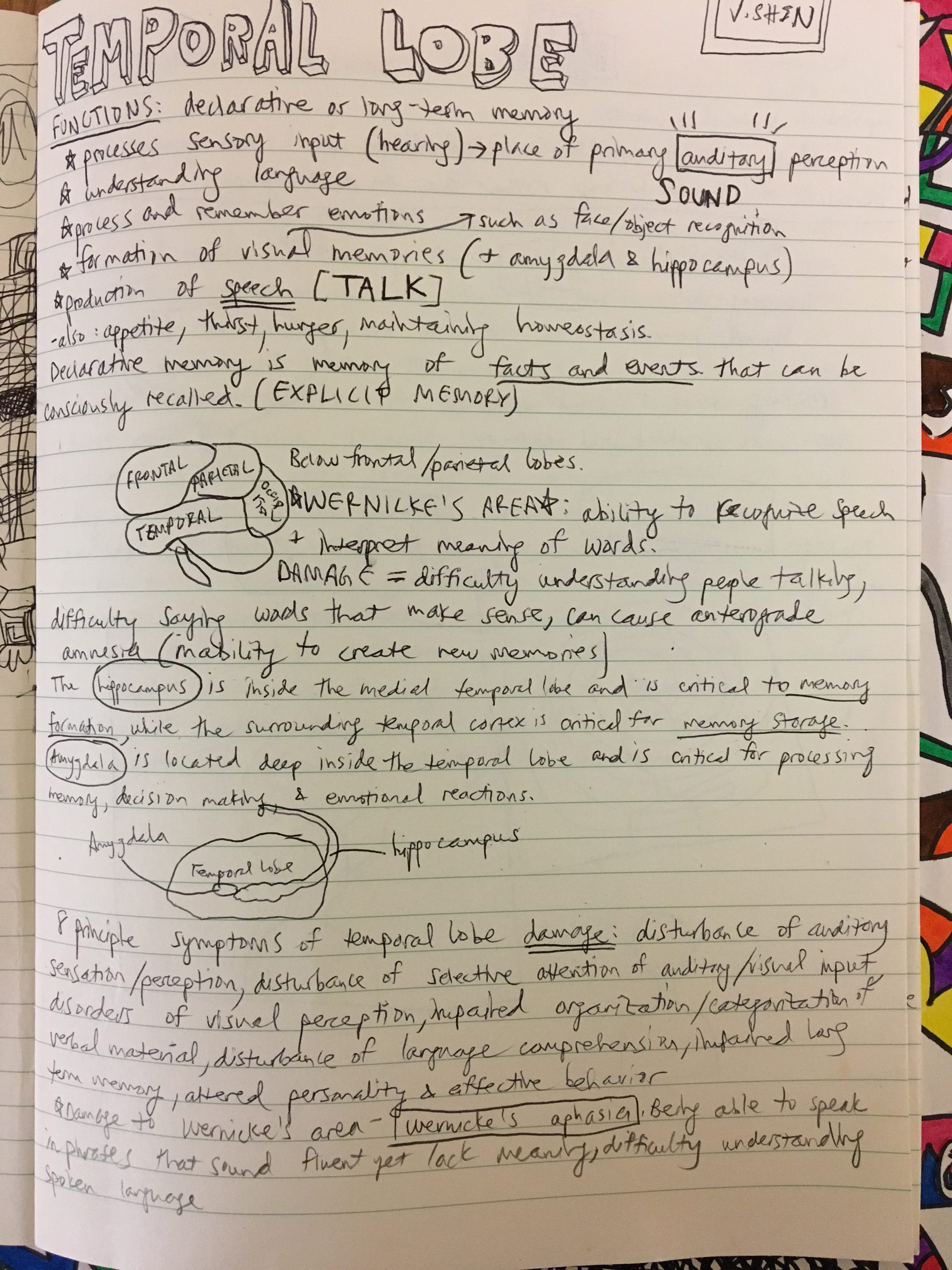Artist Statement
I researched the temporal lobe, which is the part of the brain that is responsible for processing sensory input- sound, specifically- and is the place of primary auditory perception. Here, words are given meaning and language is understood. It is also where long term memory is formed, where emotions are processed and remembered, and visual memories are formed with the help of the amygdala and hippocampus. The hippocampus is critical to memory formation, while the amygdala is critical for processing memory, decision making, and emotional reactions.
For my actual creative piece, I decided to focus on a part of the temporal lobe called Wernicke’s Area, which is the main area involved in the comprehension of speech. Somebody with damage to this area is diagnosed with Wernicke’s Aphasia, and that person would not be able to understand spoken language, or would have great difficulty processing the words that they hear. The vibrant color palette and complexity and multitude of the shapes are a metaphor for the sounds that someone with Wernicke’s Aphasia encounter- it is chaotic, with a few words vaguely processed but not fully comprehended. The head of the figure is completely blacked out because no information or content is entering. Although the knowledge of that language is stored in the person’s memory, the sensory input does not go through. This disorder distorts memory, blocking the connection between what the person hears and what they know.

